PM Element 7. Indicators
The Importance of Spare Parts Administration
Spare parts administration is crucial for organizations that rely on equipment to operate. If a breakdown or failure occurs, having spare parts on hand can reduce downtime, minimize production losses, and improve customer satisfaction. Additionally, a well-managed spare parts program can help organizations maintain equipment and facilities, extend their lifespan, and reduce the overall cost of ownership.
Key Components of Spare Parts Administration
Spare parts administration involves several key components, including:
- Spare Parts Inventory Management: This involves tracking the quantities of spare parts in inventory, monitoring inventory levels, and ensuring enough stock is on hand to meet demand.
- Spare Parts Procurement: This involves purchasing spare parts from suppliers and ensuring that they meet the required specifications.
- Spare Parts Maintenance: This involves maintaining and repairing spare parts to ensure they are ready for use when needed.
- Spare Parts Logistics: This involves managing the movement of spare parts within an organization, including storage, transportation, and distribution.
- Spare Parts Planning: This involves forecasting the demand for spare parts and ensuring that inventory levels are adequate to meet demand.
Benefits of Spare Parts Administration
There are several benefits of spare parts administration, including:
- Reduced Downtime: By having spare parts on hand, organizations can reduce downtime and minimize production losses.
- Improved Equipment Maintenance: By managing spare parts effectively, organizations can improve the maintenance of their equipment and facilities, extending their lifespan.
- Increased Efficiency: Organizations can streamline their operations by having a well-structured spare parts program, reducing costs and improving efficiency.
- Better Customer Service: By having spare parts readily available, organizations can provide better customer service and improve customer satisfaction.
Implementing a Spare Parts Administration System
To implement a spare parts administration system, organizations should conduct an inventory of their spare parts, assess their current processes and procedures, and identify areas for improvement. They should then develop a plan for managing spare parts and establish clear roles and responsibilities for managing the program.
Additionally, organizations should consider implementing a computerized spare parts management system, which can automate many of the manual processes involved in spare parts administration and provide real-time information about inventory levels and demand.
As in other activities, the indicators are essential to driving the activities in the Supply Room (Store Room).
Some examples of these indicators are:
- Inventory Value
- Number of Items
- Lack of Spare Parts
- Usage per Month
- Biggest Groups

Inventory Reduction
The objective of the Supply Room is to provide spare parts when needed, mainly for emergency repairs. At the same time, it is crucial to have the inventory level as low as possible.
It is vital to develop a systematic approach to reduce the inventory level.
Some points to be analyzed are:
- Obsolete items
- Reduce quantity in Inventory
- Implement Kanban
- Manufacture nationally
- Standardize Item
The following Flowchart helps to understand this process.

Kanban
The Kanban methodology was applied at Production Factory for some spare parts with a short lead time for delivery. To implement the Kanban Methodology, the following steps were followed.
- Define the consumption for each item.
- Define delivery lead time for the item.
- Purchase agreement to reduce lead time where needed.
- Define Purchase Point and Purchasing Amount for each item. The Purchase Point needs to be enough to supply spare parts during the delivery process, and it needs to be defined according to item criticality and consumption.
- Implement Visual Management for items.
The following flow chart explains the visual management for the bearing group.
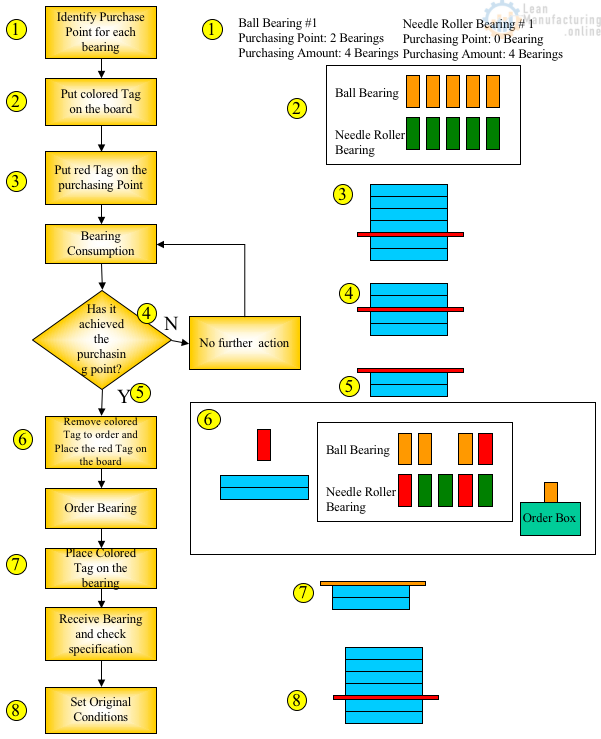
Kanban – Bearing Board

Kanban – Bearing Stocking

Inventory Review
The Inventory Review is different from the Cost Review because this is focused on actions to:
- Reduce spare parts costs
- Reduce Inventory level
- Inventory Accuracy
Supply Room Attendants, Stock keepers, Maintenance Managers, Maintenance Planners, Tradesmen and other people responsible for using and controlling spare parts need to attend this meeting.
Questions to be answered during these meetings would be:
- What were the highest costs?
- What caused these costs?
- Was it a natural or forced deterioration?
- Was the problem solved?
- Is it possible to make some improvements to reduce this expense?
- Which actions will be taken to reduce this cost in the future?
- Which is the biggest group?
- Who will be responsible for applying the Inventory Reduction flowchart for this group?
- How can tradespeople help the reduction of spare parts inventory?
Below is an example of a board to help the discussions.

Activity Board


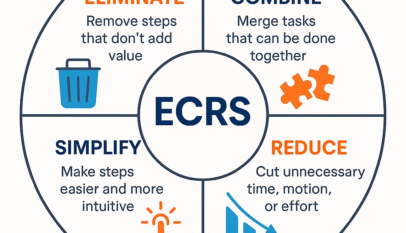
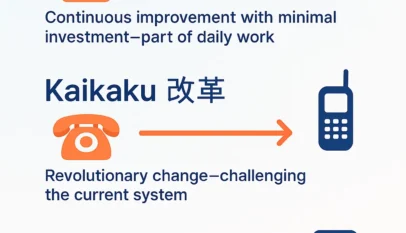
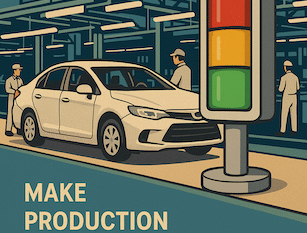



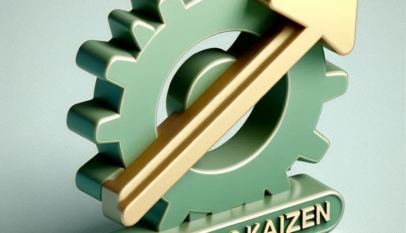










hi we need inventory software
please tell us costs involved thank you
John, thanks for your interest in our website. For your automotive business you don’t need an expensive and complicated softwares, such as SAP Plant Maintenance Module or IBM Maximo Software, try Delivrd – it’s free to start, depending on your needs $50 or $100 per month, cloud based. Hope it helps.